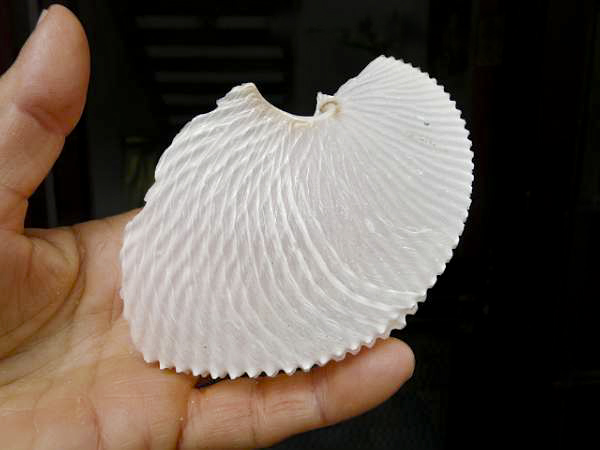Published in the Ocean Watch column, Honolulu Star-Advertiser © Susan Scott
May 31, 2010
While walking on a Baja beach in March, my friend Martha found a white, brittle shell slightly larger than the palm of her hand.
We marveled at the shell’s beauty and declared it a paper nautilus. I was hazy on what that was exactly, but remembered the shell had something to do with eggs.
“You keep it,” Martha said, when we got back to the boat.
I put this fragile gift in a plastic container and forgot about it. Only last week, when I got home to my books and the Internet, did I realize what an exceptional present this was. When you have a paper nautilus shell, you have a treasure.
A paper nautilus is an octopus. Another common name for it is argonaut. In Greek mythology an argonaut was a sailor on the Argo, the ship Jason sailed in search of the Golden Fleece. Scientists stuck with this fanciful theme, naming the most common of paper nautiluses Argonauta argo.
Although argonauts look like most octopuses — eight arms, rounded body — they don’t behave like most octopuses. Argonauts live offshore near the surface of tropical and subtropical oceans, snatching crabs, jellyfish and snails that pass their way. The octopus grabs prey with its tentacles, injects poison with a bite, then eats its paralyzed meal. If the prey is a shelled animal, the argonaut drills a hole in the shell with its sharp tongue, called a radula.
Researchers have confirmed four argonaut species, the females all at least three times larger (or more) than the males of the species. The largest female is about 12 inches wide, the smallest about 2 inches wide.

The shell Martha found is a chamber that female argonauts secrete to hold their eggs and control their buoyancy. The prospective mother builds her shell, then backs into it to lay and brood her eggs, leaving only eyes and arms sticking out of the opening.
This is where the name paper nautilus came from. The shape of the thin egg casing is similar to a chambered nautilus shell, and with the mother inside, it looks like one, too. The female argonaut, though, is not connected to her shell, nor does it have chambers.
But the shell does hold air. At the surface the female argonaut captures a bubble of air in the closed end of her shell. She controls her buoyancy by controlling the air’s density, and in this way either floats near the surface or sinks beneath it.
Predators come from above and below. Seabirds eat argonauts as do tunas, billfish, mahimahi, dolphins and seals.
Female argonauts have two enlarged tentacles that secrete the egg shell and later wrap around it. In the era of Aristotle, people believed these tentacle flaps were sails that the octopus raised to the wind for locomotion.
To deliver sperm, the male argonaut inserts one specialized tentacle into the female’s shell and drops off a packet of sperm, leaving the wiggling end of the tentacle behind. Early naturalists mistakenly identified this as a parasitic worm.
Males mate once, then die. Females, though, lay numerous batches of eggs in a lifetime.
To see an excellent video of a live argonaut, go to Argonaut video.
Although it’s slightly broken, my paper nautilus shell was a wonderful gift. (Thank you, Martha.) Few people get to share an office with a sailor of the Argo.